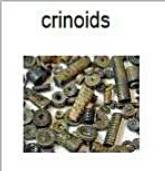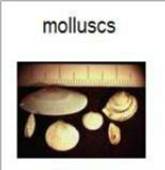DO NOT ATTEMPT THIS CACHE IF THE COODINATES
ARE UNDER WATER!
Since 1820, researchers have reported more than 600 different
species of fossils at the Falls of the Ohio State Park, however,
two-thirds of those reports accidental repeats of the same fossils.
Still, having over 200 species of identifiable fossils from a
single location is still quite impressive. The area does host an
exciting assortment of brachiopod, coral, crinoid, and other marine
invertebrate fossils, many of which are only found at the
Falls.
Your adventure at this location will allow you to try to locate
and identify some of the many diverse fossils found within 30 feet
of the given coordinates. On four different field trips to the
area, our high school class members were able to find and record 37
different fossils in the rocks near the base of the large
cottonwood tree. There are no doubt many more to be found, and you
can help us locate them all.
To claim this EarthCache, all you need to do is find the
given coordinates, and:
- take a close-up shot of a fossil at the site
- Optional, but very welcome--you may like to add a photograph
of your gps (or yourself and your gps) "pointing" out the
fossil
- try to identify the type of fossil (just “type”
--not the specific species!)
- log your find, giving the coords where you found your fossil
in the log if you like*
*If you prefer more mystery, you can email us
with the coordinates and ID.
Feel free to tell us more in your online log.
- Did you visit the other EarthCaches in the area?
- What was the water level the day you visited?
- Did you see any loose fossils?
- Did you join the guided tour of the fossils given by volunteers
on Fall weekends?
Remember, it is against
federal and state law to collect fossils at the Falls of the Ohio
State Park.

Types of fossils found at the Falls of the
Ohio State Park
To help you with your identification, look at the images below
for general shapes. Click the links for more information.
 Brachiopods are
marine animals that have a shell made of two valves, which usually
differ in shape and size. Brachiopods
are closely related to the bryozoans. Brachiopod comes from Latin
and means "arm" + "foot" and bryzoan means "moss animal"
Brachiopods are
marine animals that have a shell made of two valves, which usually
differ in shape and size. Brachiopods
are closely related to the bryozoans. Brachiopod comes from Latin
and means "arm" + "foot" and bryzoan means "moss animal"
 Crinoids are a sort
of sea lily, an animal which attaches itself to the ocean floor,
has a columnar stem and a flowery type of head.
Crinoid comes from a Latin phrase that means "like a lily"
Crinoids are a sort
of sea lily, an animal which attaches itself to the ocean floor,
has a columnar stem and a flowery type of head.
Crinoid comes from a Latin phrase that means "like a lily"
 Molluscs - A group
of that includes the gastropods and the cephalopods--including
snails, clams, squid, and slugs. Mollusk comes from the Latin for
"soft"
Molluscs - A group
of that includes the gastropods and the cephalopods--including
snails, clams, squid, and slugs. Mollusk comes from the Latin for
"soft"
 Cephalopods were
squid-like creatures with tentacles which occupied a tube-like
shell. Cepalapod means
"Head-foot"
Cephalopods were
squid-like creatures with tentacles which occupied a tube-like
shell. Cepalapod means
"Head-foot"
 Gastropods-include
organisms such as slugs, snails , and limpets. Gastropod
means "Stomach-foot"
Gastropods-include
organisms such as slugs, snails , and limpets. Gastropod
means "Stomach-foot"
 Stromatoporoids-were spongelike reef-building creatures.
They used to be grouped with the corals, but now we think they were
more like sponges. Stromataporoids
form in mat-like mounds.
Stromatoporoids-were spongelike reef-building creatures.
They used to be grouped with the corals, but now we think they were
more like sponges. Stromataporoids
form in mat-like mounds.
 Cnidarians the
Greek word “cnidos,” means “stinging
nettle.” All cnidarians have specialized cells that can
inject poison into their prey. Corals are a branch of the Cnidarians
Cnidarians the
Greek word “cnidos,” means “stinging
nettle.” All cnidarians have specialized cells that can
inject poison into their prey. Corals are a branch of the Cnidarians
Good sites to learn & see more:
Paleoport
College Virtual Lab Trip
Fossil ID #1 (brachiopods, crinoid,
bryzoan)
Fossils ID # 2 Horn coral and cephalopod
Fossil ID #3 various named fossils
Fossil ID #4 various named fossils
Fossil ID #5 various named fossils
Falls of the Ohio Brachipods
Falls of the Ohio Mollusks
Falls of the Ohio Crinoids &
Blastoids
USGS information on the Devonian period
TECHNICAL INFORMATION
The Jeffersonville is subdivided into five zones, each with
characteristic rock types.
The coral zone, the lowest level, contains three distinct
phases which grade into one another. The lower layers contain many
upright branching corals, large corals, and both mat-like and
mound-like stromatoporoids. As levels increase, solitary corals and
branching-coral fragments appear, supporting formation as a coral
bank below effective wave base.
The Amphipora-zone sediments in southern Indiana
grade northward into pelsparite deposited in shallow waters over
the Geneva platform and continue into laminated dolomite.
Regression of the sea during deposition of upper sediments
displaced the facies southward, reflecting shoaling over a bank.
Fragmental Amphipora and matlike stromatoporoids are the
dominant elements.
The Brevispirifer gregarius zone contains
grain-supported biomicrite grading northward into mud-supported
biomicrite during a containing regressional period. Laminated beds
continued to accumulate in the shallow shelf lagoon with periodic
exposure of the flats producing mud cracks. Charophytes in
brackish-water on the flats, supplied oögonia to marine sediments
to the south. Brevispirifer gregarius and echinoderms are
the dominant faunal elements.
The fenestrate bryozoan-brachiopod zone intertongues
northward with the laminated beds of the shelf lagoon.Fenestrate
bryozoans, echinoderms, and brachiopods characterize this zone.
Corals and stromatoporoids reappear as significant components,
indicating a second major transgression of the Jeffersonville
sea.
The Paraspirifer acuminatus zone is the most
widespread of the zones and consists of grain-supported biomicrite
and biosparite. These sediments are linked genetically to the same
transgressive phase as the underlying fenestrate
bryozoan-brachiopod zone sediments.
PERKINS R.D., (1963) Petrology of the Jeffersonville Limestone
(Middle Devonian) of Southeastern Indiana. Geological Society of
America Bulletin: Vol. 74, No. 11 pp. 1335–1354 (Modified for
brevity).